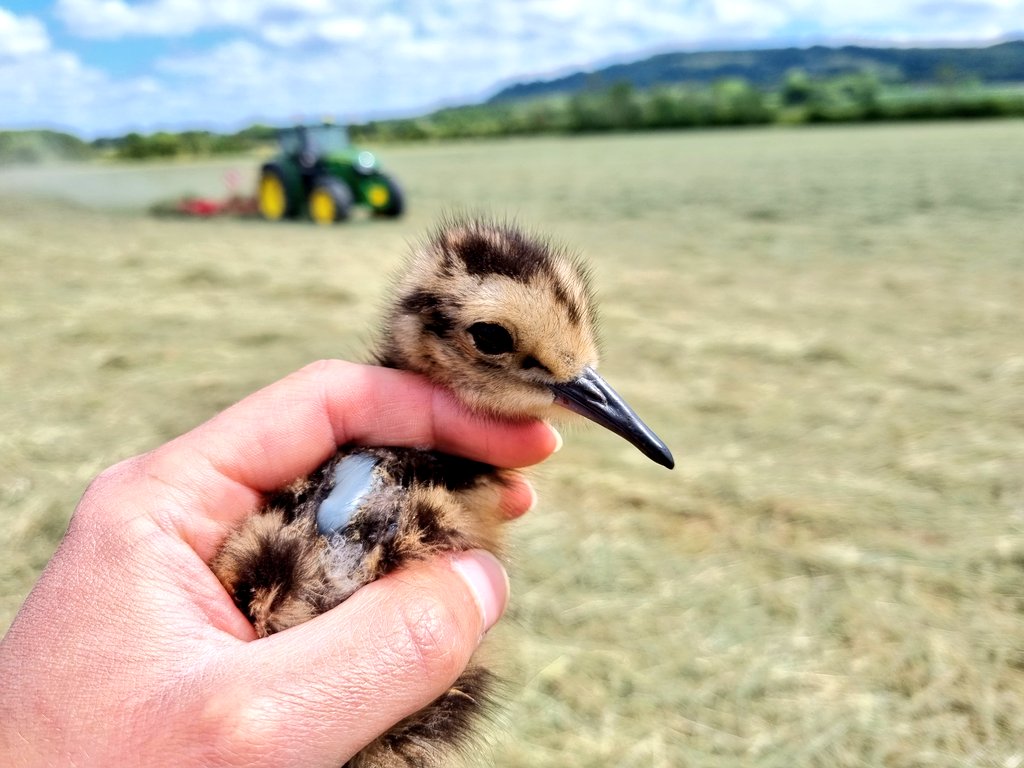 Curlew chick (Photo by WWT)
Curlew chick (Photo by WWT)
On November 13th, 2024, Curlew Action hosted a free webinar bringing together conservationists, researchers, and curlew advocates from over 15 European countries. Chaired by Mike Smart, former Curlew Action trustee and long-time champion of wader conservation, the event provided a sobering yet hopeful snapshot of the Eurasian Curlew’s breeding season across Europe.
You can watch the full webinar now here.
Curlew at a Crossroads
The Eurasian Curlew (Numenius arquata), Europe’s largest wader, is declining in nearly every part of its range. With two related species, the Eskimo Curlew and Slender-billed Curlew, already extinct or critically endangered and believed extinct, the Eurasian Curlew’s trajectory has become a symbol of wider environmental change.
Key Themes Across Europe
Across the continent, curlews face a range of challenges, habitat loss, intensive agriculture, predation, disturbance and climate extremes leading to a lack of productivity. But from Scandinavia to the Iberian Peninsula, efforts to monitor, protect, and boost curlew populations are intensifying.
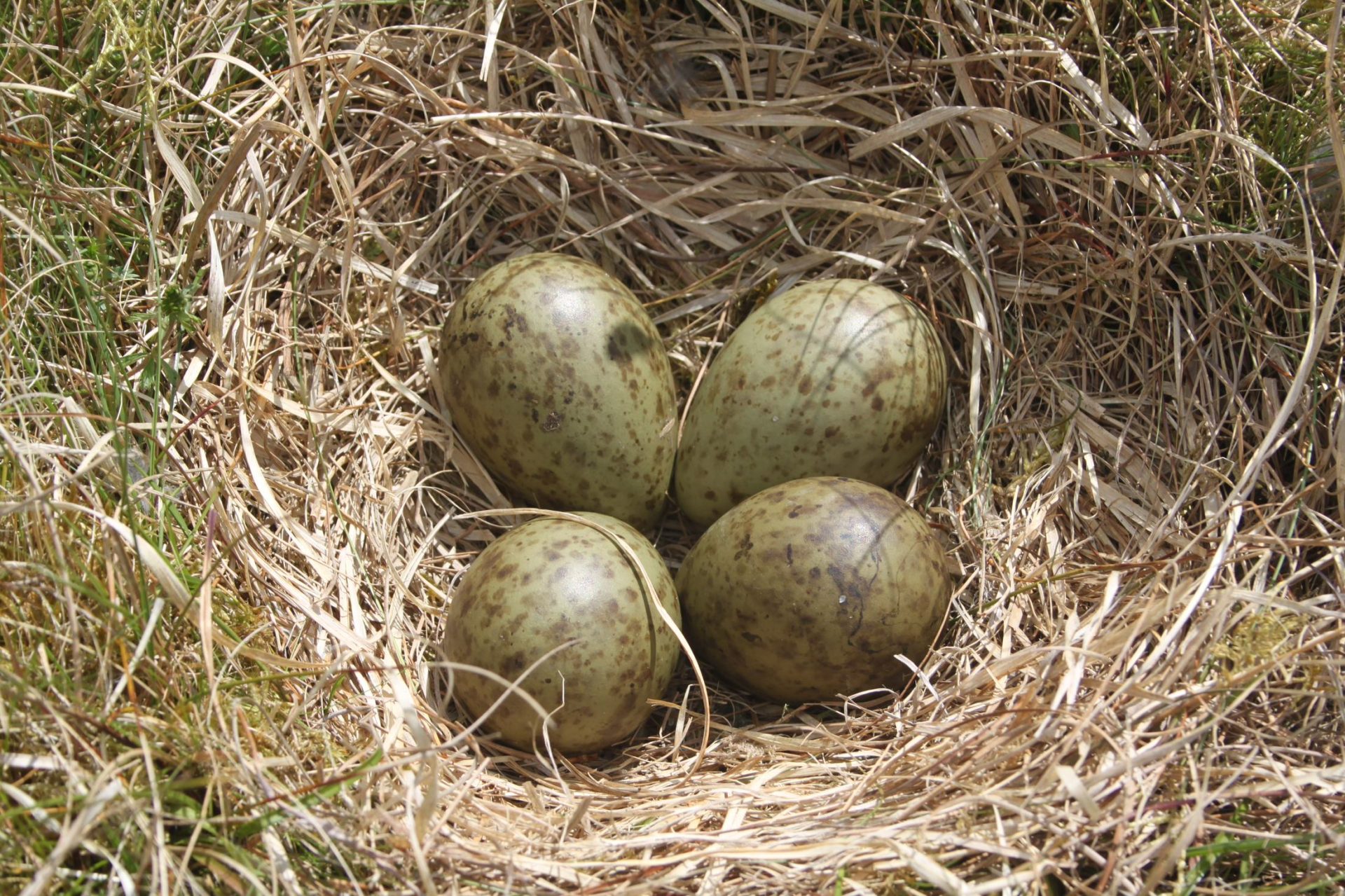
Highlights by Country
Norway
Paul Shimmings of Birdlife Norway reported mixed results. In Vega, numbers remain stable (~75-80 pairs), but this is an exception. Nationwide, the breeding population has halved since 2008. Agricultural change and predation remain key pressures.
Finland & Sweden
Both countries are seeing long-term population declines. Finland’s Ringing Atlas data revealed heavy hunting losses during migration (now banned). Sweden has lost over 50% of its population since the 1970s and now classifies curlew as Endangered.
Poland
Once numbering 650-700 pairs, Poland now supports around 200 breeding pairs. Conservation initiatives like nest fencing and headstarting (raising chicks from collected eggs) are beginning to show signs of hope.
Germany
Germany’s situation varies by region. While Lower Saxony has seen sharp declines (down from 2,300 to 1,200 pairs), predator control efforts at fenced sites (like Munich Airport) are proving effective. Bird of prey predation is emerging as a serious issue.
Netherlands
Despite having a winter population of up to 170,000 birds, breeding success continues to decline. Predation and weather-especially flooding and late winter vole crashes-have driven poor productivity. Headstarting and nest fencing are being trialled.
Belgium
With only 170-230 breeding pairs left in Flanders, nest success is extremely low, 9% without electric fencing protection vs 62% with fencing. Headstarting since 2020 has shown promise, though productivity is still below sustainability levels.
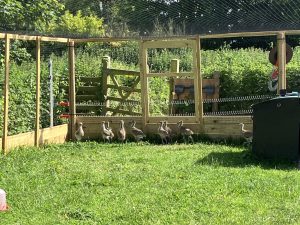
France
France supports 20,000-30,000 wintering birds, thanks to a hunting ban. There are around 1,000 – 1,500 breeding pairs which are declining (only 6 pairs left in Brittany), though some positive signs have emerged in western France due to targeted fieldwork. See our French blog from a visit in 2025.
Austria
A rare success story: Austria’s population has nearly doubled to 150-170 pairs due to active habitat management and use of new habitats like airfields.
Switzerland
No breeding pairs since 2006, though 800-1,500 wintering birds now use remnant wetland sites. Habitat loss and agriculture have permanently displaced breeders.
Switzerland has lost around 90% wetlands in the last 200 years. The final broods were located in wetlands.
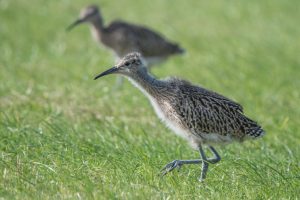
Ukraine
Ongoing war has halted much research. Before 2020, curlew populations had dropped to just 17-23 pairs. Major threats include intensive agriculture, habitat transformation, afforestation, and noise/disturbance from conflict.
Spain
Europe’s most southerly breeding population is down to just two pairs, neither of which successfully fledged chicks. Headstarting is underway, but with no returning birds yet, urgent collaboration is needed.
Ireland
Through the Breeding Waders European Innovation Partnership, Ireland has launched (in 2024) a major €25M initiative to help 10 species of wader in Ireland. Headstarting has boosted productivity dramatically (from 0.31 to 2.7), but without it, native populations are close to collapse. See our blog from our visit to Ireland in 2025.
UK
With ~25% of the global curlew population, the UK plays a critical role. Yet the breeding population has halved in 20 years. Productivity remains dangerously low (0.25 chicks per pair in lowland regions). Headstarting now yields more chicks than wild pairs in some areas. Success is being seen in long-term, farmer-supported projects in Northern Ireland and Yorkshire.
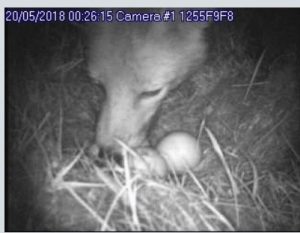
A Shared European Responsibility
Despite the regional variation, one message is clear: collaboration across borders is critical. Curlews are long-distance migrants, and what happens in one country affects the whole population. Efforts like nest fencing, predator control, habitat restoration, and especially headstarting are yielding measurable results but not yet at the scale needed.
Upcoming events, including the European Curlew Fieldworkers Workshop in February 2026, aim to expand these practices and encourage collaboration.
Final Thoughts
The 2024 breeding season was a difficult one for many curlew populations across Europe. Weather extremes, changing agricultural practices, and predation continue to depress productivity. However, through science-led conservation, increased awareness, community engagement, and pan-European cooperation, there are reasons to hope.
Curlews have sounded the alarm. The question is, will we listen?
For more information and updates, visit Curlew Action.
